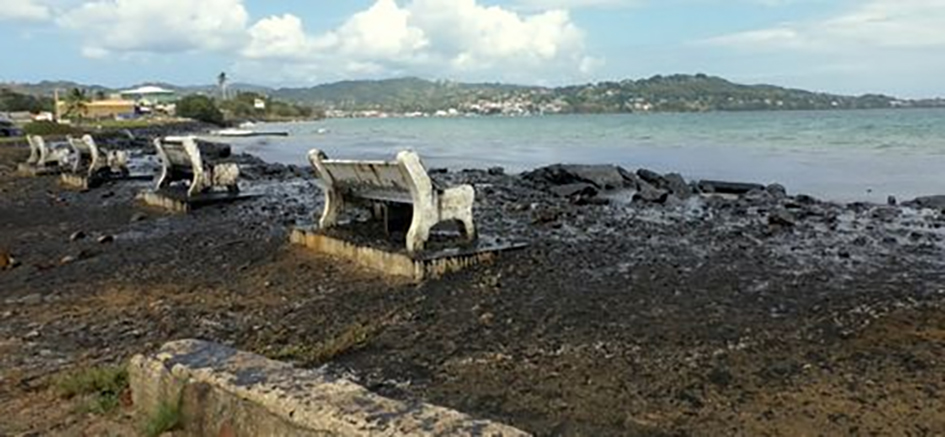(Trinidad Guardian) Diesel has been identified as the oil-like substance which has been leaking from the Gulfstream barge and blanketed 15 kilometres of Tobago’s shoreline since February 7, when the vessel ran aground at Cove, Tobago.
Chief Secretary Farley Augustine said on Tuesday that the Institute of Marine Affairs (IMA) had identified the fuel after testing samples first taken when the substance first washed onto Tobago’s shores.
However, the IMA is expected to take a more concentrated sample from the vessel to confirm this finding. He said the diesel type could help trace it to its origin.
Speaking after a tour with the media of several affected areas, Augustine said, “It is heavy. It is not a refined product. Notwithstanding, they (IMA) are coming back to do additional taps, and that is why the remote-operated vehicle (ROV) is working today. We could locate the best place to do the tap. Even the last sample they received had some elements of seawater in it.”
The vessel ran aground near the coast of Cove on February 7 and within hours, oil deposits blanketed the shoreline extending from Canoe Bay to the Port of Scarborough. In the first 24 hours, the Tobago Emergency Management Agency (TEMA), the Trinidad and Tobago Coast Guard, and dive officials launched search and rescue operations for potential survivors.
Divers confirmed there was nothing to suggest there was life onboard. However, they visually identified Gulfstream as the name engraved near the vessel’s bow.
The disaster was upgraded from a Tier One to Tier Two level by the third day as efforts to contain and clean-up the spill increased. Within days, the affected area in Scarborough had mostly been restored, while efforts to complete clean-up throughout Lambeau Village are expected to finish in the coming days.
Up to Tuesday, Augustine said the island was still at a Tier Two level but said the THA may need international help. In the first week of the oil spill, Augustine repeatedly said the THA and TEMA were “putting things in place” to announce a Tier Three emergency. Yesterday, however, he said he didn’t want to announce a Tier Three level prematurely.
“Given the conversations we have had with the Ministry of Energy (and Energy Industries), we can expect some further development later down this week because we are approaching a space whereby we would need to call on international resources.”
Senior commander Sargao Lomban, of Ambipar Response, a global environmental response and incident management organisation, told Guardian Media his team had managed to access the blueprint of the vessel, so the operations moved from containing the diesel to making a second attempt to cap the spill.
Duty manager Andy Nevin, of Oil Spill Response Limited, another international company, said the fume levels were not hazardous at this time.
He stated, “The oil we have at this moment is very heavy and crude. We have been doing gas testing up and down the coast all the time, everyday. It isn’t dangerous at the moment. The workers working on this area about a week ago, there were signs where we can smell the oil, so we just want to get the oil out of this area so it can be safe for the children.”
Meanwhile, the Ministry of Energy and Energy Industries announced an international partnership between T&T Salvage LLC and QT Environmental Inc, who are licenced oil spill removal organisations with specialists.
The team and equipment from Subsea Specialist Ltd, T&T Salvage LLC, and QT Environmental Inc were expected in Tobago yesterday and will remain on the island until Friday.
The international team includes a salvage master overseeing the hydrographic survey, while a commercial dive crew will assess and plug leaks using surface-supplied air.
Based on the survey findings, the salvage team will co-ordinate with local and international organisations in Tobago to implement a layered surface fuel recovery programme. Additionally, underwater, non-floating oil detection systems will be employed to maximise the identification and recovery of all fuel leaked from the vessel.
The Energy Ministry has also enlisted the services of Subsea Specialist Ltd, an ROV contractor, to conduct ROV works around the vessel.
With T&T Salvage LLC and QT Environmental Inc’s strong working partnership and extensive global experience in salvage, wreck removal, and spill response, the ministry said Government is hoping the spill will be capped and the fuel contained soon.






